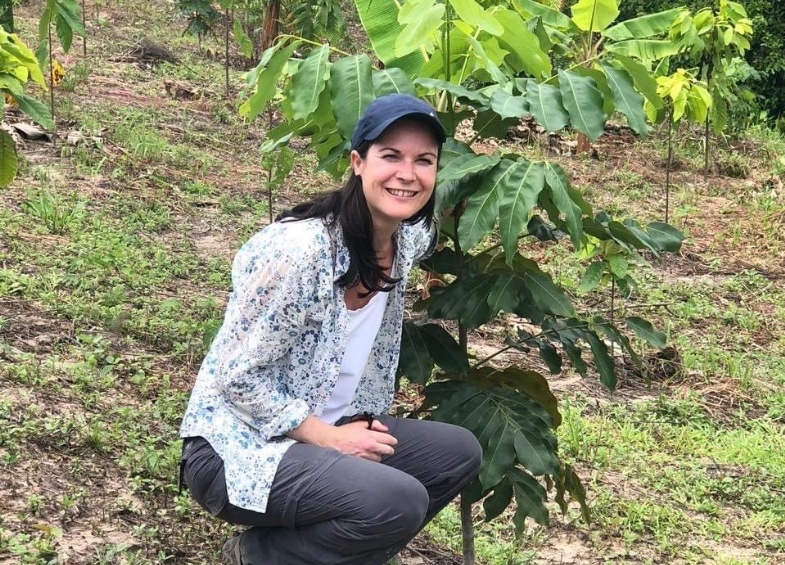
Our Year 8 Journalism Team have been researching different ways we can help our planet to mark World Environment Day. Here they interview Jenny Henman, founder of Plant Your Future which she established to help reverse the effects of Climate Change and reduce poverty by planting trees in the rainforests of Peru.
Q: Where did your passion for trees and sustainable forestry come from?
JH: I grew up in rural Oxfordshire so spent a lot of time out and about in nature as a child which I loved - my childhood home was called ‘Wood View’, in fact. However my passion to protect the Amazon Rainforest was sparked during my time in Peru interviewing rural Amazonian families as part of my research for my Master’s Degree at University. From these interviews I came to understand that deforestation was happening because local people were left with no alternative but to clear the rainforest to eke out a living to survive. Cutting down the rainforest provided them with some space to grow crops and feed themselves. However these families continued to live in poverty and with only just enough to support themselves. This struck me as such a tragedy both in terms of the loss of precious rainforest, but also in terms of local communities destroying their environment our of lack of alternatives but in so doing being locked in a vicious circle of poverty. So my passion came from a wish to stop this happening.
Q: Why is planting trees the fastest way to reverse climate change and why is the Amazon rainforest such a key location?
JH: In contrast to other ways of mitigating climate change, planting a tree reverses what has already happened - in that it actually takes carbon dioxide (a harmful greenhouse gas) out of the atmosphere. When trees grows they suck CO2 out of the air and store it in their biomass - i.e. their trunk and branches. Most of the other means of mitigating climate change prevent more greenhouse gases being added. The Amazon Rainforest is such a key place for tree planting as a way to tackle the climate emergency because the hot and rainy weather means trees grow a lot faster there. For example a timber tree planted today in the Amazon Rainforest will store about whopping 11 times more CO2 than a tree planted in the cooler climes of the UK.
Q: Has anyone in particular inspired you to be where you are today?
JH: A continual source of inspiration for me has been the smallholder farmers we work with. They never give up on the vision of hope to improve their livelihoods and their ambitions for their families to have a better life in the future. They always take set-backs in their stride and have been fantastic partners in our work to reforest and restore the Amazon Rainforest. Every time I go to Peru I am so inspired by them and it fills me up with energy to continue working to scale-up our fundraising efforts so we can help more families in the Amazon adopt agroforestry.
Q: What are your ambitions for the coming years?
JH: We’ve set ourselves a bold target of planting 1 million new trees on deforested areas over the next 3 years!
Q: If you could give one message to the world on World Environment Day what would it be?
JH: We need to be giving the resources and tools to smallholder farming families across the tropics to help them plant trees on their land. There are about 3 billion rural people living in rural Africa, Latin America and Asia, across 475 million small farms (below 2 hectares in size) - so a major proportion of the global population. With tree planting one of the best means to tackle the climate crisis in the near-term, as well as build resilience of vulnerable communities to the impacts of climate change (such as drought and floods), we as the global community have to support them to plant trees on their land and adopt agroforestry. Investment is desperately lacking but desperately needed in agroforestry at the grassroots.
Q: What has been the largest obstacle you have had to overcome with the charity?
JH: Sadly I am not a millionaire - and I set up the charity when I was quite young so I still have another day job to support myself. As a result, my life is one big juggling act. Fundraising has been a constant battle, competing against the slick marketing of bigger charities (whilst on a shoe-string marketing budget ourselves) and finding ways to effectively convey our message to donors here of how important our work is to protect the Amazon Rainforest.
Q: What advice you would give to people who want to following in your foot steps and help change the world for the better for future generations?
JH: Go for it - the world needs you. Without more young people stepping up to help solve the climate crisis we will not have a very hospitable planet in the future. I would recommend volunteering in your spare time for environmental causes to get experience.
Q: What are the most important things to bear in mind when planting the trees in the Amazon?
JH: That it isn’t about the number of trees that your plant but rather the number of healthy trees that reach maturity - so it really important to nurture the tree after planting it with appropriate fertilisation, pruning and pest control. Trees need some love to grow well…...


